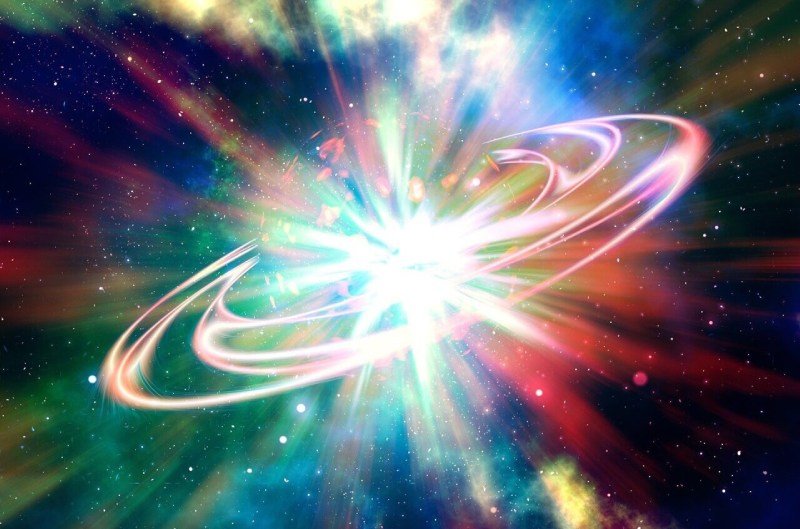
Physicists have become definitely keen on the initial billion years of the universe-the stretch between the Big Bang and the development of the principal stars during which systems started to frame. During the last 600 million years or so of this period, the impartial interstellar cosmic medium and, surprisingly, pre-cosmic medium-became ionized with bright radiation transmitted by the primary stars gleaming in the earliest, developing systems. A comprehension of the physical science of this stretch called the “Age of Reionization,” or EoR would interface the physical science of the advanced universe to the Big Bang.
“The Epoch of Reionization addresses the last significant progress of the universe in the account of grandiose development,” says hypothetical astrophysicist Paul Shapiro at the University of Texas at Austin, “from the stage when all of the room was loaded up with an almost featureless, homogeneous gas to the stage wherein structure arose, with the primary systems framing and inside them, stars.”
Noticing the far-off wellsprings of reionization straightforwardly is testing, and location is up until this point restricted to the most brilliant universes. Physicists use virtual experiences to reproduce the rich material science of the EoR. On April 10, during the APS April Meeting 2022, hypothetical astrophysicist Paul Shapiro from the University of Texas at Austin will introduce features and observational expectations from the Cosmic Dawn III (CoDa) Project, the biggest radiation-hydrodynamics recreation of the EoR to date.
Reenacting the EoR with CoDa III required weighty computational lifting. With a trillion computational components 81923, dim matter particles and 81923 gas and radiation cells in a locale 300 million light-years across today-the model had a goal sufficiently high to follow all the recently framing cosmic haloes that obtained reionization in that volume, past the compass of normal PCs. The recreation ran for 10 days on 131,072 processors coupled to 24,576 realistic handling units at the hugely equal supercomputer, Summit, situated at Oak Ridge National Laboratory in Tennessee.
Size isn’t the main amazing component of the CoDa III reenactment, says Shapiro. Following the development of universe arrangement and reionization requires representing a common input process: ionizing radiation that spilled out of cosmic systems needed to warm the intergalactic medium. That extra hotness, thus, compressed gas to the point of opposing the gravitational draw of adjacent universes. Since the gas would somehow have powered the development of star arrangement, the net consequence of this cycle is to frustrate new stars.
Past models make isolated these impacts, however, Shapiro says CoDa III can reenact the gravitational elements of gas and matter together while representing ionizing radiation and its impact on the gas. Without radiative exchange, time in the transformative model would need to be partitioned into steps little to the point of addressing the changing densities of gas and stars and dull matter. The expansion of this input circle implies the time steps should be many times more modest to catch the high velocity of the “surfaces of ionization”- quickly growing ionizing bubbles dashing outward from recently shaped cosmic systems and clearing across the universe. According to the connected processors and GPUs at the Summit supercomputer, Shapiro made it conceivable to address these conditions nearly as fast as though the model did exclude radiation.
According to quite, Shapiro, CoDa III tackles an issue among hypothesis and observational information that has arisen in EoR studies; to be specific, the hypothetical forecasts of past models don’t agree with perceptions of quasar retention spectra that test the universe toward the finish of the EoR and later. This issue disappears in CoDa III, as the reenactment produces self-steady expectations that concur with the most recent perceptions.
Shapiro predicts that the investigation of the EoR is ready to go through its own fast development before very long. Space-based observatories like the James Webb Space Telescope, which was sent off in December 2021, and the Nancy Grace Roman Space Telescope, which is planned to send off in 2027, alongside ground-based projects like the Extremely Large Telescope, will work on cosmologists’ capacity to notice the remote of reionization. Present and impending radio examinations could assist researchers with better compelling the clumpy, inhomogeneous way that the IGM became ionized.
Recreations like Cosmic Dawn, says Shapiro, give a hypothetical establishment to what these modern telescopes will see. “Aside from matching the current range of perceptions and anticipating new ones,” he says, “it gives basic knowledge into the idea of the actual cycles that occurred.”
